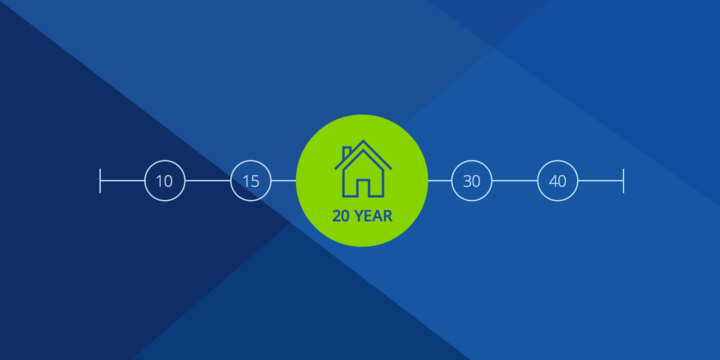What Is a Financing Contingency on a Home Purchase?
Having a financing contingency can protect you if you are unable to get approved for a loan. Learn more about this home-purchase clause, and whether it makes sense to waive it.


Written by Vivian Tejada on January 31, 2025
Reviewed by Neil Swanson, Edited by Jessica Rapp
Most home buyers choose to use a mortgage to finance part of their home purchase. To protect themselves from having to move forward with a home purchase they can’t afford, many buyers include a financing contingency in their offer. The contingency allows the buyer to back out of the deal if they are not approved for a mortgage, or approved for less than they need to cover the purchase price of a home.
More than half of buyers (56%) surveyed by Zillow in 2024 reported their final offer was contingent on successfully receiving financing (e.g. mortgage approval). A financing contingency isn’t a requirement for making an offer, but it can help you avoid unnecessary stress from the time you make the offer up until you close on the home. We’ll explain how financing contingencies work and why you might consider including one in your purchase agreement.
What is a financing contingency?
A financing contingency, also known as a mortgage contingency, is a clause included in a purchase agreement that allows buyers to back out of a real estate deal if they’re unable to secure financing. Buyers use this clause to establish a set period of time (usually 30-60 days) to apply for a mortgage loan and receive the funds needed to purchase a home. If a buyer is unable to obtain the necessary funds, they can back out of a deal with no penalties.
Why is a financing contingency important?
Mortgage financing contingencies are important because they release buyers of their legal obligation to purchase a property when they don’t have the financial means to do so.
Since purchase agreements are legally binding contracts that require the buyer and seller to follow through on the deal, including a financing contingency in the agreement prevents the seller from pursuing legal action against you for not closing on the deal. Buyers also often include a stipulation within their financing contingency that allows them to get their earnest money deposit back if the deal falls through.
How does a financing contingency work?
When a buyer finds a house they’re interested in, their agent will submit an offer to the seller on their behalf. If the buyer is financing the purchase with a mortgage, their agent will likely advise them to include a financing contingency clause in their offer letter to notify the seller that the offer is contingent on securing financing before ever entering into a purchase agreement.
If the seller accepts your offer, both parties sign a purchase agreement, which includes the home sale price, financing details, and other information related to the sale. Once the purchase agreement is signed, the seller agrees to take the property off the market for a certain period of time, also known as the financing contingency period.
During this time, the buyer submits a formal mortgage application with a lender. Once the buyer is approved for a mortgage, they’ll provide the seller with a mortgage commitment letter from their lender, and begin the closing process.
With a financing contingency in place, the buyer won’t be penalized if their mortgage loan isn’t approved. However, with no financing contingency in place, the buyer is still on the hook for a home purchase and will likely need to forfeit their earnest money deposit if they can’t purchase the home.
Pro tip: Including a pre-approval letter with your offer could increase the chances of your offer being accepted, especially in a seller’s market. A pre-approval letter usually signifies that a lender is ready to approve you for a mortgage, as long as your financial profile doesn’t change between now and closing day.
How long does a financing contingency last?
A financing contingency is usually valid for 30-60 days. The buyer and seller agree to a specific time frame when they sign the purchase contract. If a buyer is pre-approved, they might agree to a shorter contingency period, but if no pre-approval has been issued, they might need more time to get approved.
If a buyer isn’t able to get a mortgage by the financing contingency deadline, they can request an extension with the seller. The seller can either accept or reject their extension request. If the seller refuses to grant an extension, the buyer decides if they want to cancel the deal or move forward with the purchase without a mortgage loan.
What is included in a financing contingency clause?
Financing contingency clauses contain information relevant to the financing of a home purchase. They can be as detailed or as sparse as you’d like. The buyer and seller should agree on the details included in the clause before signing it. Most financing contingency clauses include the following sections:
Mortgage type
This section explains the type of mortgage being pursued. Some of the most common mortgages are FHA, VA, USDA, or conventional home loans. Listing the type of mortgage allows the buyer and seller to know the type of financing being pursued and where the funds would be coming from. Switching to another mortgage type than the one listed in your contingency, such as changing from a conventional loan to FHA, could give the seller grounds to cancel the sale.
Earnest money
Most buyers will put down what is known as earnest money to show the seller they are serious and able to complete their offer. This is usually in the form of a check and is usually 1% to 5% of the sale price. When a seller accepts an offer, the earnest money check is held in escrow or sometimes by the title company or real estate agent and is eventually applied to the down payment for the loan. Financing contingencies typically state that the buyer's earnest money will be returned if the buyer cannot get financing.
Loan amount
Another piece of information that can’t be left out of a financing contingency is the loan amount. This is important to include to prevent the seller from raising the price after you’ve been approved for a certain amount of money. It also protects the buyer if they’re approved for less than what they need to finalize the purchase. The buyer can terminate the sale without penalty if the amount they’re approved for doesn’t match the amount needed to purchase the home.
Maximum interest rate
In addition to the loan amount, buyers should also include the maximum interest rate they’re willing to pay if and when they get approved for a mortgage loan. If a buyer gets approved for the appropriate loan amount at a rate that will increase their monthly payments well above what they’re comfortable paying, they can back out of the deal penalty-free.
Closing costs
Closing costs are also often included in a financing contingency. Buyers are usually responsible for their own closing costs, but in some cases, sellers may pay a buyer’s closing costs. You want to make sure you and the seller are on the same page about who is responsible for paying closing costs and how much they will pay to avoid any surprises on closing day.
Financing contingency deadline
Lastly, financing contingencies should include a deadline, which lets the buyer know how long they have to secure financing. In some cases, a buyer and seller include a financing contingency extension date, which automatically extends the financing contingency period if the buyer doesn’t get approved for a mortgage before the original deadline. If the financing contingency period ends, the seller may choose to extend the deadline further or back out of the deal.
Should you waive your financing contingency clause?
In some instances, a financing contingency isn’t necessary. This is usually the case when the buyer is paying for a property in cash or using seller financing. Buyers may also waive a financing contingency to make a more competitive offer, especially if they already have mortgage financing secured. Waiving financing contingencies or a portion of them is more common in seller’s markets when buyers want to make their offers stand out.
However, leaving out a financing contingency is usually risky. Buyer financing can fall through for several reasons, including unexpected changes to your financial situation, such as losing a job, issues with the home appraisal, or inability to verify key documentation. The absence of a financing contingency leaves buyers vulnerable to penalty fees and potential lawsuits. Err on the side of caution and include a financing contingency in your purchase contract whenever possible.
Read the fine print if you are using a financing contingency
It is important to read and understand all the terms of a financing contingency before you sign it. Make sure your real estate agent and mortgage lender explain anything you find confusing. At Zillow Home Loans*, our loan officers are available to guide you through your financing options and the process. Connect with us 24/7.
*Zillow Home Loans; An equal housing lender. NMLS #10287
How much home can you afford?
At Zillow Home Loans, we can pre-qualify you in as little as 5 minutes, with no impact to your credit score.
Zillow Home Loans, NMLS # 10287. Equal Housing Lender
Get pre-qualifiedHow much home can you afford?
See what's in reach with low down payment options, no hidden fees and step-by-step guidance from us at
Zillow Home Loans.
Zillow Home Loans, NMLS # 10287. Equal Housing Lender
Calculate your BuyAbility℠
Related Articles
Get a mortgage with Zillow Home Loans
Go from dreaming to owning with low down payment options, competitive rates and no hidden fees. A dedicated loan officer will guide you until you have your keys in hand.

Zillow Home Loans, NMLS #10287. Equal Housing Lender.



